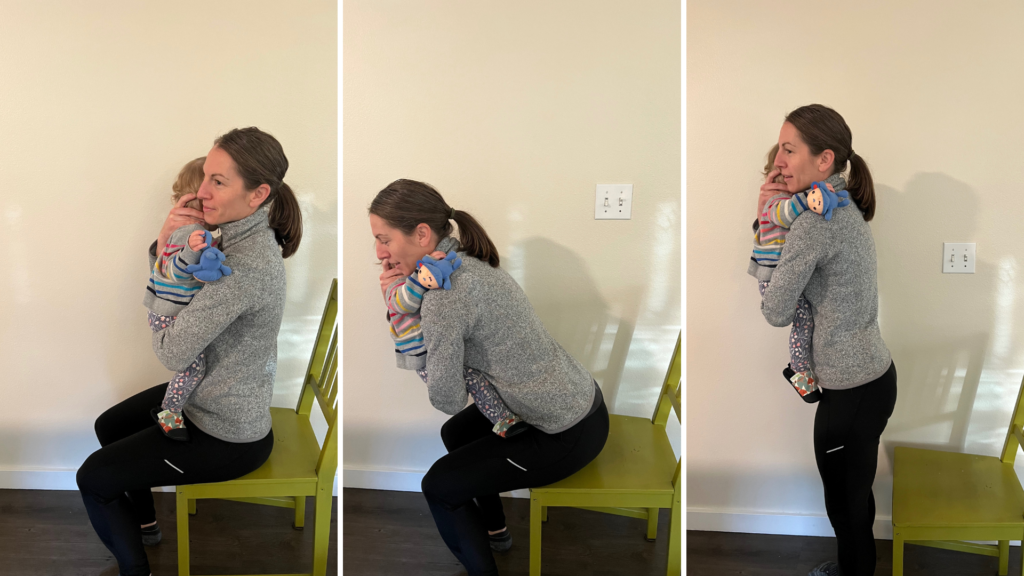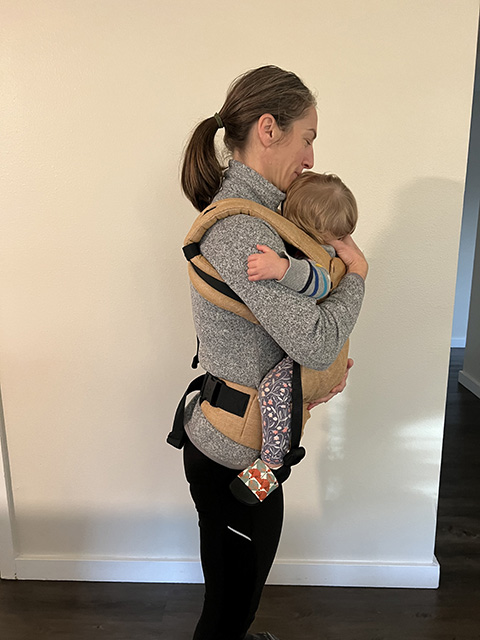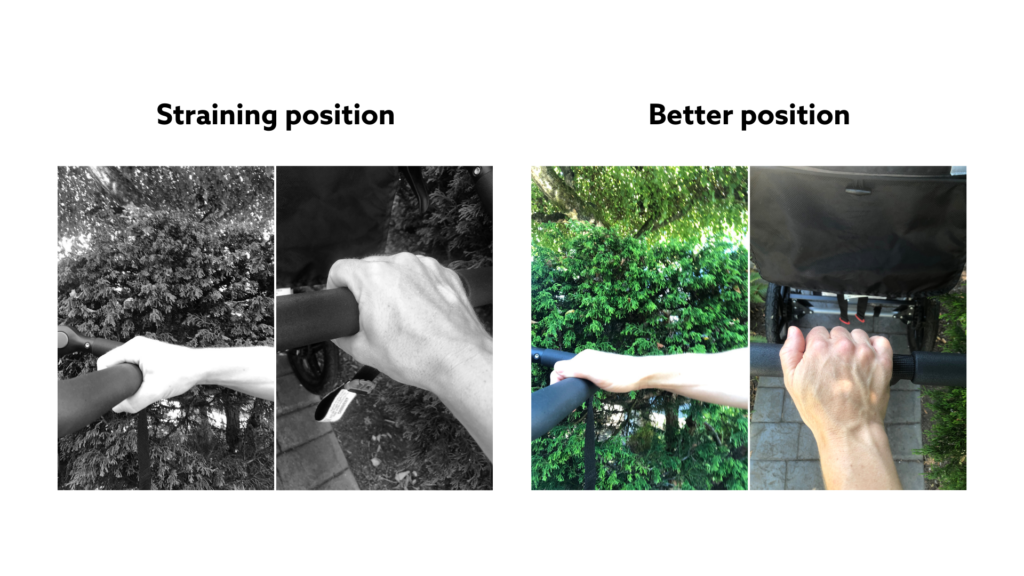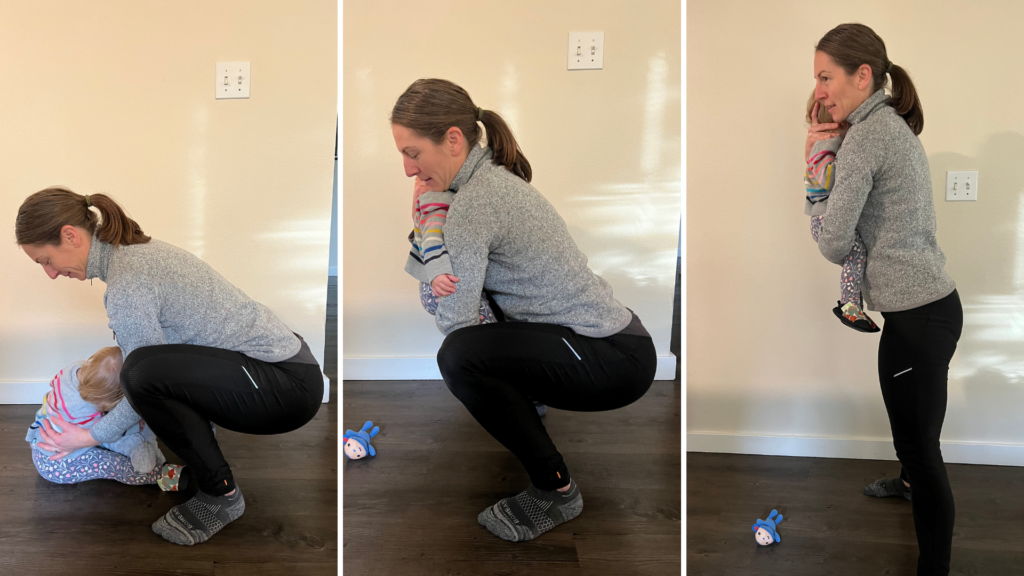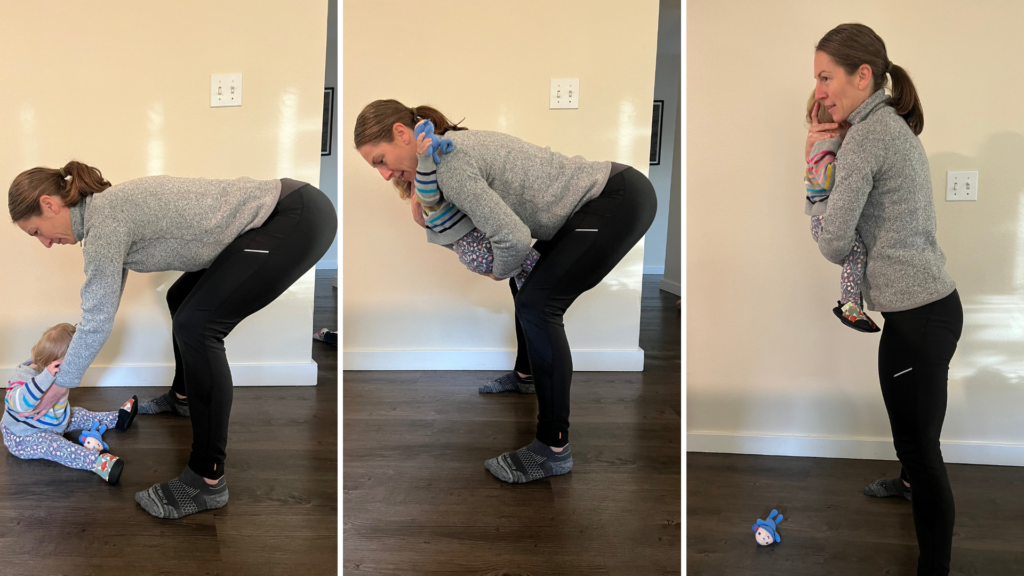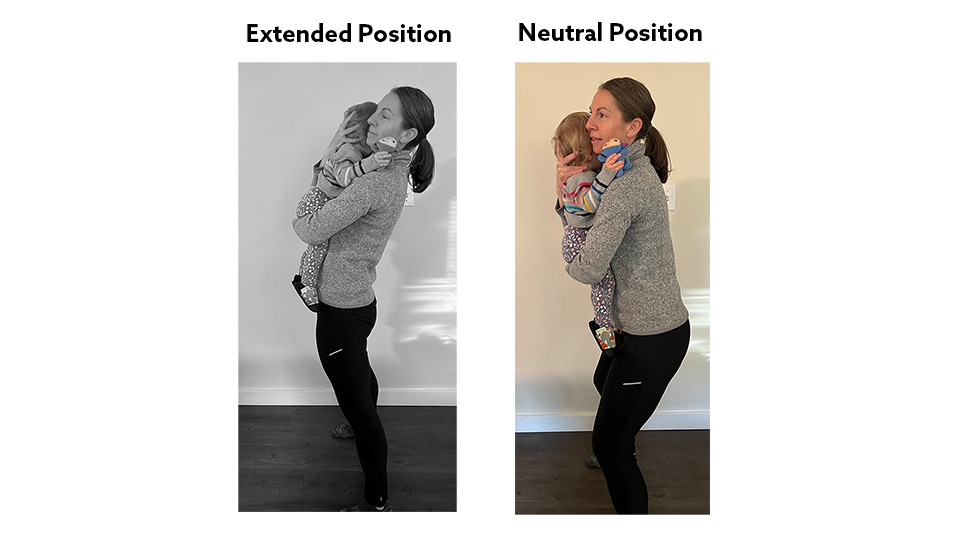Body Mechanics with Baby and Toddler- Part 2
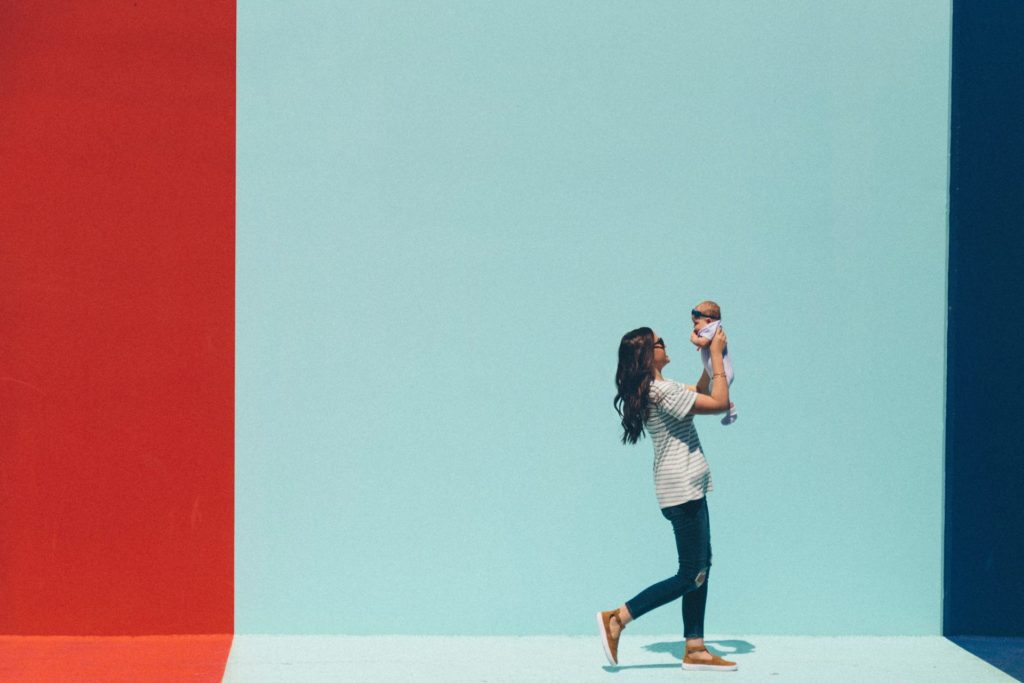
How to keep your body healthy and avoid injury while caring for little ones
Alexis Eusterbrock, DPT, COMT, OCS, pelvic rehab provider
Part 1 of this blog was published in 2018. As I continue to work with parents, grandparents, and caregivers, I realize that more information is needed regarding body mechanics when caring for children. Unfortunately, this information is not commonplace in parenting education. Providing for a child’s needs is physically demanding and involves repetitive movements. As with most activities, it is best to implement preventative strategies to reduce the potential of musculoskeletal conditions, pain and/or overuse injuries. And the healthier you are, the better you will be able to care for your little one!
Here are a few tips to guide you in maintaining sound body mechanics during
common movements required when caring for young children.
See part 1 of this blog for additional movement tips!
Moving with baby from sitting to standing
As a parent or caregiver, you will often be moving from sitting to and from standing while holding your baby. Using good body mechanics will help to avoid stress to your body and keep you strong.
- Hold baby close to your chest
- Scoot to the edge of the seat
- Slowly shift forward, hinging at your hips, allowing your nose to come over your toes
- Inhale, exhale as you press through your heels to rise into a standing position
- Be careful not to overextend your back when you come to full standing
Baby wearing
Maintaining good posture when wearing baby can be very challenging. This is partially due to difference in carrier fits and dimensions. If you can, before baby arrives, try out different carriers and see which fits your torso best.
- Whether baby is forward or backward facing in the carrier, make sure baby is high enough so you can easily kiss the top of their head
- Snug baby into the carrier so they are kept close to your chest and body
- If you are experiencing any back pain or neck pain-try meeting with a physical therapist to establish the right fit
- If you are wearing a wrap vs. carrier, follow similar principles of keeping baby high and close to your body
Thumb protection
Our thumb position is not something that we regularly think about, but it does become important when we are doing more repetitive movements like lifting baby, holding baby, feeding baby, carrying a car seat, and pushing a stroller. There are times, like when lifting baby, where you may need your thumb held away from your fingers and palm to securely support your baby. But, other times, like pushing a stroller do not demand this degree of grip. Consider the following position to help protect your thumbs from overuse while pushing a stroller.
- Keep your thumb close to your other fingers and palm vs in an outstretched or over-gripped position for long stroller walks.
- This same position can also be used when supporting baby while feeding.
Lifting baby or toddler from the floor
The floor is a very safe place for your baby or toddler to play and explore their environment. You will likely find yourself on the floor with baby, and lifting them from the floor often. Establishing good body mechanics with lifting when your baby is young will help immensely as your baby grows (and they will……quickly)!
- Squat option:
- Lifting: come into a deep squat position close to baby, bring baby close to your chest, inhale, exhale as you press through your heels to stand
- Lowering: hold baby close to your chest, come into a deep squat position, then gently extend elbows to bring baby to the floor
- Hip hinge option:
- Lifting: hinge at your hips shifting buttocks back and chest down (think deadlift) to lower your body to baby (it is ok for knees to slightly bend), bring baby into your chest, then slowly press through heels, engage your buttocks muscle and un-hinge to rise to standing
- Lowering: hold baby close to your body, hinge at your hips as described above, once you are as low as you can go, slowly extend your arms, and safely bring baby to the floor
Soothing baby in standing
Any new parent knows that hours upon hours will be spent soothing your baby, and often, parents are doing this when their minds and bodies are extremely fatigued. Many parents and caregivers will make the mistake of resting baby’s weight on their chest and leaning back into their heels placing a lot of stress on the lower back and pelvic/hip ligaments. Try these tips to help protect your lower back and maybe create some new soothing stimulus that baby will enjoy.
- Hold baby close to your body
- Check the weight distribution in your feet—weight should be over your
arches, not your heels - Make sure your shoulders are stacked over your hips —NOT behind your hips!
- Widen your stance so feet are wider than the hips
- Bend knees slightly
- Slowly walk forwards, side to side, or make figure 8 circles using legs and hips to propel you
If you are following these tips and still experiencing bothersome symptoms, reach
out to a physical therapist to assess and guide your care. Happy caregiving!

